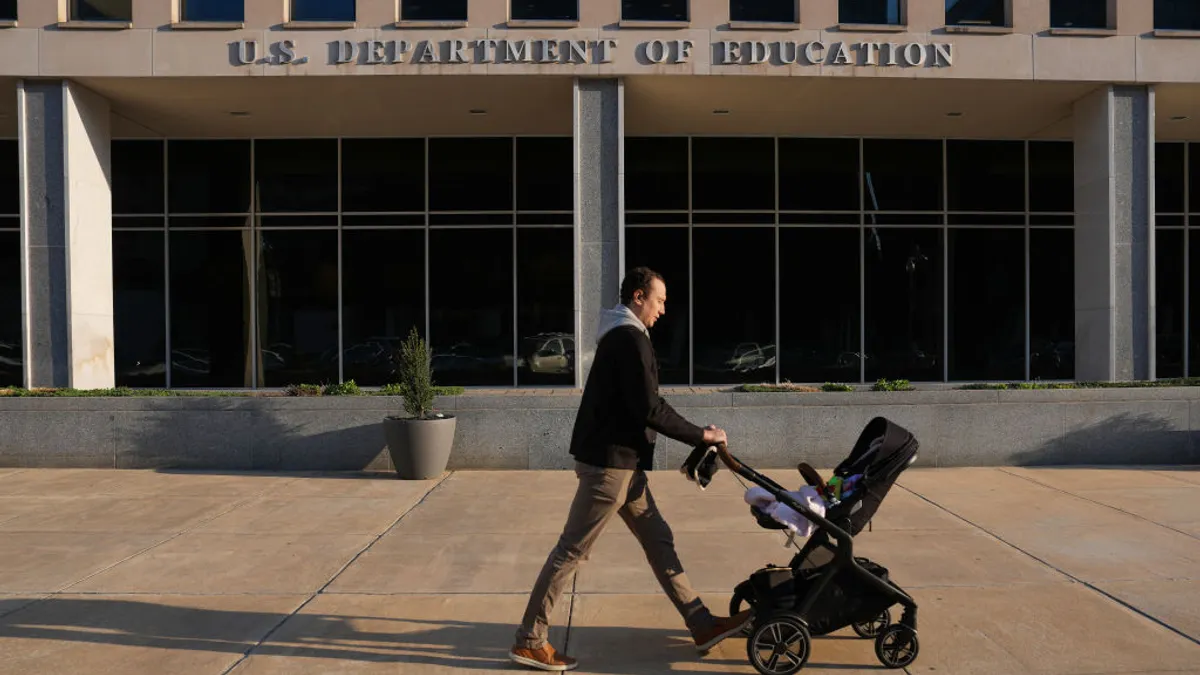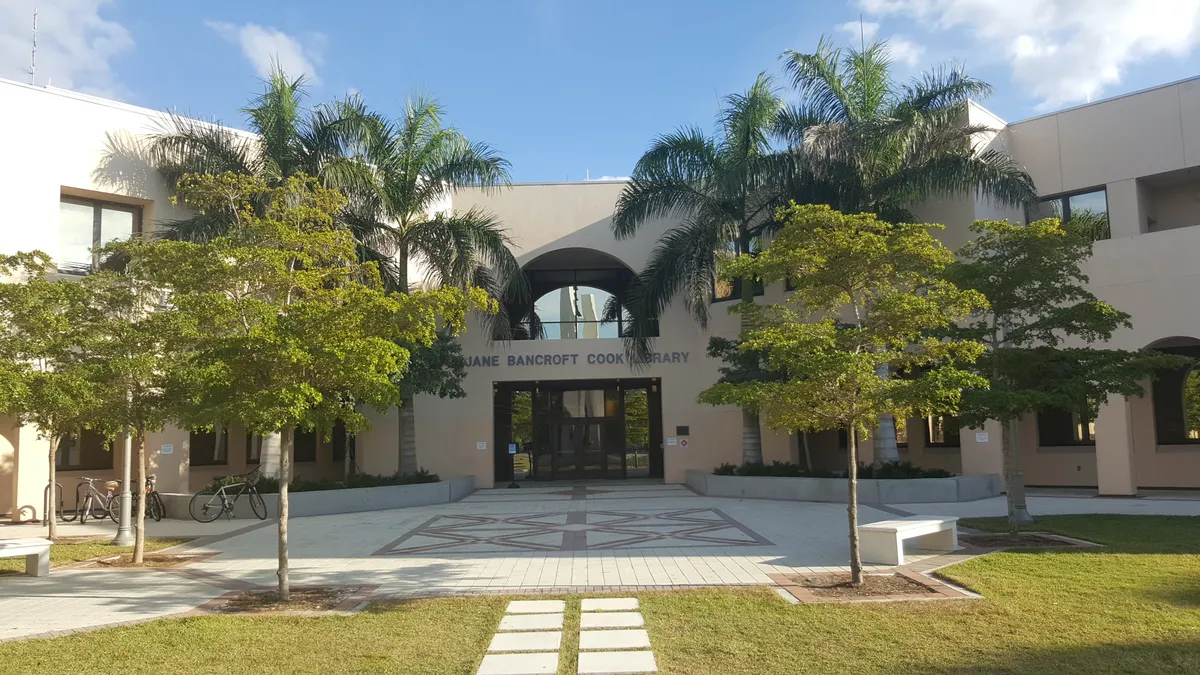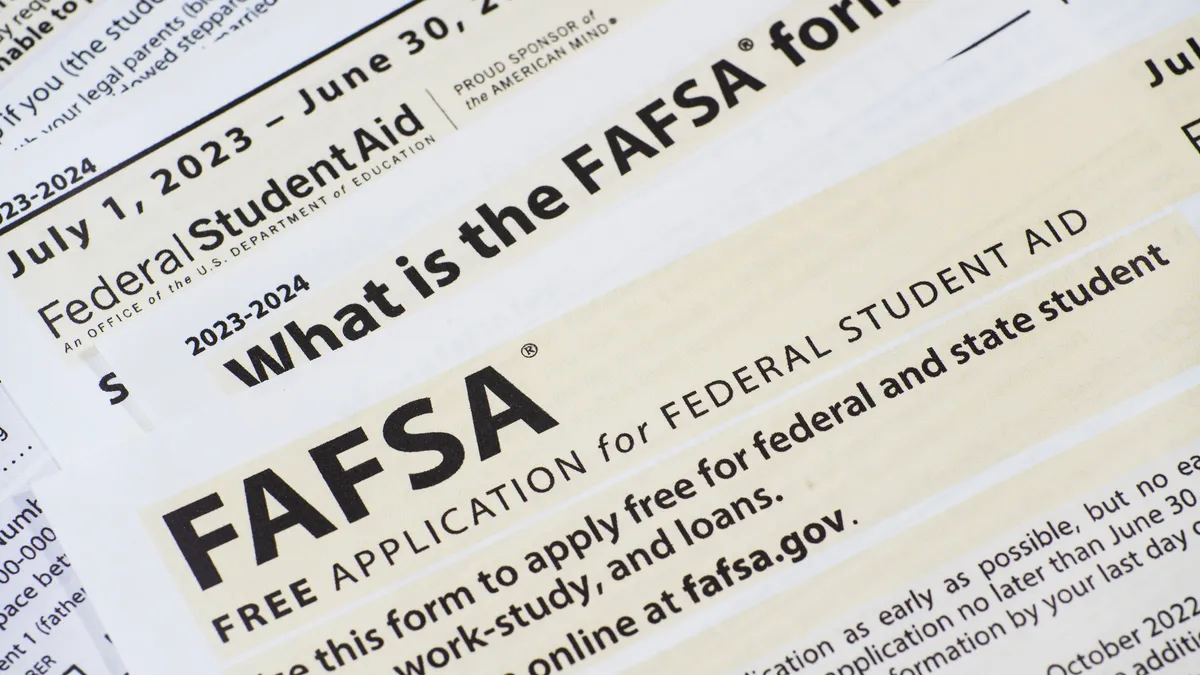Senate Republicans released a legislative proposal Tuesday to overhaul the nation’s higher education sector, including eliminating Grad PLUS loans and stripping federal student loan eligibility from college programs whose former students don’t meet earnings benchmarks.
The draft proposals are the Senate Health, Education, Labor and Pensions Committee’s contributions to what Republicans dub the One Big Beautiful Bill Act, which would fund GOP priorities like tax cuts and immigration crackdowns.
The Republican-led committee estimated the higher education measures would lower federal spending by $300 billion, partially offsetting the larger legislative package’s hefty price tag.
The House version of the One Big Beautiful Bill Act, passed last month, would put colleges on the hook for unpaid student loans, roll back several Biden-era higher education regulations and steeply raise taxes some wealthy colleges pay on their endowments.
While the HELP committee’s draft version of the bill’s higher education provisions includes several of those same measures, it differs from the House bill in key ways.
The two chambers will need to hash out the differences in their two proposals in order to pass the legislation — a potentially difficult achievement with Republicans’ thin majorities in the House and Senate.
The lawmakers are attempting to pass the bill through a process known as reconciliation, which allows the Senate to approve spending measures with a simple majority versus the 60 votes needed to overcome a filibuster. President Donald Trump has asked lawmakers to pass the legislative package by July 4.
Below, we’re rounding up some of the major proposals from the Senate and how they compare to the House’s bill.
How the Senate and House proposals compare
Broad changes to federal student aid
Senate Republicans proposed eliminating Grad PLUS loans, which allow graduate and professional students to borrow up to the cost of attendance. They also want to restrict unsubsidized graduate student loans to $20,500 per student each year, with a $100,000 lifetime limit. Students pursuing professional programs, such as law or medicine, would be capped at borrowing $50,000 per year, with a $200,000 lifetime limit.
They also pitched capping Parent PLUS loans to $20,000 per student annually, with a $65,000 lifetime limit per student.
Republicans in the House suggested different caps.
Their plan would eliminate Grad PLUS loans and subsidized loans for undergraduates. They also want to limit annual federal borrowing of unsubsidized loans to the median cost of a student’s program of study.
House Republicans proposed a lifetime loan limit of $50,000 for undergraduate students, $100,000 for graduate programs and $150,000 for professional programs. They also proposed restricting Parent PLUS loans to $50,000 per parent, regardless of the number of dependents they have.
Senate and House Republicans both pitched consolidating the current student loan repayment plans into just two — a standard plan with fixed payments spanning 10 to 25 years and an income-driven repayment plan with payments amounting to 1-10% of borrowers’ earnings.
The income-driven repayment plan — dubbed the Repayment Assistance Plan in both proposals — would require payments for up to 30 years. One higher education expert has described the length of that term as “indentured servitude,” CNBC reported.
Sameer Gadkaree, president of The Institute for College Access & Success, likewise panned the Senate’s plan and urged Congress to reject the bill.
“It would implement an overly complex plan that departs from decades of precedent by forcing the lowest-income borrowers to make unaffordable payments and extending the repayment term to 30 years,” Gadkaree said in a Wednesday statement.
GOP lawmakers in both chambers also want to make changes to the Pell Grant program. Both would expand Pell Grants to short-term programs — a measure that has gained bipartisan support in recent years.
And they both would add new funding to the program to help it avoid a looming shortfall. The Senate’s plan would give the Pell program $10.5 billion in additional funding for fiscal 2026, while the House would give the same amount spread out over fiscal years 2026, 2027 and 2028.
However, each chamber seeks to tighten eligibility in different ways. Senate Republicans would cut off students from receiving Pell Grants if they received scholarships covering their cost of attendance, which includes tuition, fees, living expenses, book and course materials.
Meanwhile, House Republicans pitched raising the definition of full-time enrollment — which is necessary to receive the maximum Pell Grant — from a minimum of 24 credit hours each year to 30. American Council on Education President Ted Mitchell has described the House’s proposal as “crippling,” noting that roughly 700,000 students could lose eligibility for the grants.
A different accountability measure than risk-sharing
The House’s version of the bill contains a risk-sharing measure that would require colleges to make payments based on the federal student loans balances of their students who aren’t in repayment.
However, Senate Republicans have proposed a different accountability measure — pulling federal student loan eligibility from programs that don’t provide an earnings bump to students.
Undergraduate degree programs would risk losing federal student loan eligibility if more than half of their former students earn less than the median worker in their state with only a high school diploma.
Graduate programs would face a similar measure — they would risk losing access to federal student loans if more than half of their former students earn less than the median worker in their state with a bachelor’s degree working in the same field.
Both undergraduate and graduate programs would lose their eligibility for federal student loans if they failed to meet those benchmarks in two out of three consecutive years.
The measure is similar to the gainful employment rule, which threatens to cut off federal student aid to programs that fail an earnings test. However, the gainful employment rule only applies to career education programs — namely, programs offered at for-profit colleges and nondegree programs.
Gadkaree described the accountability measures in the Senate draft’s provisions as an improvement over the House’s risk-sharing scheme.
But the measures "will be impossible to implement without a fully staffed Department of Education that can collect, process, and share reliable data about college graduates outcomes, including graduation, earnings, and debt,” Gadkaree said.
Kelly McManus, vice president of higher education at research and advocacy group Arnold Ventures, said in a statement Wednesday that the bill “takes an important step” to adding accountability and urged lawmakers to add a debt-to-earnings metric in addition to the earnings test.
Rolling back Biden-era regulations
Both proposals would roll back Biden-era regulations and limit what rules the U.S. Department of Education could issue going forward.
The Senate committee’s draft proposals, for instance, would repeal the Biden administration’s version of the borrower defense to repayment rule, which made it easier for students defrauded by their colleges to receive loan forgiveness. It would do the same for the closed school discharge rule, which provides student loan relief for students whose colleges suddenly shuttered.
Both rules are currently blocked by federal court.
Under the committee’s draft plan, the Education Department would return to the Trump administration’s version of those rules.
While the House’s version also wants to repeal those two Biden-era rules, it goes even further.
It would also repeal the gainful employment rule, which requires career education programs to prove their graduates can earn enough to pay back their student loans and that half of them earn more than typical workers with only high school diplomas.
It would also roll back the 90/10 rule, which requires for-profit colleges to receive at least 10% of their revenue from sources other than federal education funding.
House and Senate Republicans both want to limit the Education Department’s power, however. Their proposals each would restrict the agency from issuing new regulations related to federal student lending that would increase government spending.





















